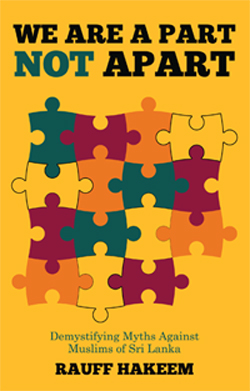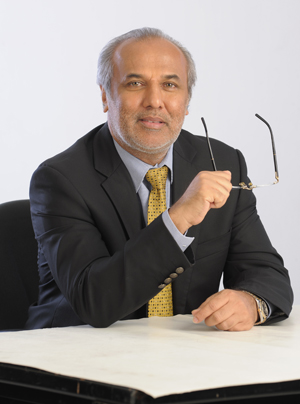Dispelling fears
View(s):Dispelling Myth of Unethical Conversion for Historically Swelling Numbers of Ceylon Moors/
Sri Lankan Moors
 Under this section, we need to examine the historical context in which the Muslims of Sri Lanka acquired the label and classification of ‘Ceylon Moors’ (Lanka Yonaka) in the census records of Sri Lanka. Census taking was introduced by the Dutch first and fine-tuned later by the British. Under our monarchy, all were subjects of the king. Our allegiance to the king determined our loyalty and fidelity to the Buddhist faith of the king who allowed us to practice our faith without hindrance. The colonial administration introduced census classifications by ethnicity and religion. The colonial project had specific needs from the different groups of the native population. Pearl fishery for example was the exclusive preserve of Muslims as Leonard Woolf (1962) describes in his meticulous diaries. While the native king demanded allegiance, the colonial masters demanded varied services from the different categories. It started with the VOC (Dutch East India Company) merchants whose mercantilism totally reshaped the island’s economy that rested on subsistence agriculture. The British civil servants in the service of the empire further transformed it. Indentured Indian labour supported the plantation economy and the Muslims provided the special skills needed in pearl fisheries, and as a pivotal intermediary trader class needed in urban settlements.
Under this section, we need to examine the historical context in which the Muslims of Sri Lanka acquired the label and classification of ‘Ceylon Moors’ (Lanka Yonaka) in the census records of Sri Lanka. Census taking was introduced by the Dutch first and fine-tuned later by the British. Under our monarchy, all were subjects of the king. Our allegiance to the king determined our loyalty and fidelity to the Buddhist faith of the king who allowed us to practice our faith without hindrance. The colonial administration introduced census classifications by ethnicity and religion. The colonial project had specific needs from the different groups of the native population. Pearl fishery for example was the exclusive preserve of Muslims as Leonard Woolf (1962) describes in his meticulous diaries. While the native king demanded allegiance, the colonial masters demanded varied services from the different categories. It started with the VOC (Dutch East India Company) merchants whose mercantilism totally reshaped the island’s economy that rested on subsistence agriculture. The British civil servants in the service of the empire further transformed it. Indentured Indian labour supported the plantation economy and the Muslims provided the special skills needed in pearl fisheries, and as a pivotal intermediary trader class needed in urban settlements.
The census reflected the increase and decline of various groups according to habitat occupation and migration from one part to another – that was unheard of before the colonial order. The demographic profile mirrored the changes and fluctuations of the profit-driven colonial enterprise. The process of census taking according to classification commenced with the first census of 1881. Whatever increase or decline would have been either due to natural causes or the census takers discretion in reclassifying and switching from one category to another. For example, the distinction between Indian Muslim and ‘Ceylon Moor’ was for practical purposes a distinction without a difference. Electoral representation in subsequent years and political compulsions made the acquisition or shedding of the newly recognised ‘Ceylon Moor’ identity as a matter of great importance. In the early years, the new Muslim merchant class constituted an elite that collaborated with other elite classes. When identity politics replaced class politics in the post 1956 era, the comparative headcount began in earnest.After the Indo-Lanka accord and the 13th Amendment to the constitution, the ethno-religious head count became an absolute imperative for the Muslims. Due to post-war triumphalism Muslim population numbers have become a politically charged issue and hence this book.

Rauff Hakeem
As we know, Arabian seafarers and traders reached these shores and settled down from pre-Islamic times (Kiribamunne 1986; Dewaraja 2019; Arasaratnam 1964). The ‘Ceylon Moor’ identity of the Muslims of Sri Lanka is essentially a British colonial device that institutionalised a differentiation that started with the Portuguese occupation followed by the Dutch. The Portuguese dismantled the trade of the ‘Coastal Muslims’ and the Dutch made them intermediaries to trade with the native Sinhalese. The British made the ‘Ceylon Moors’ a reliable native segment in their administration. Under colonial rule the ‘Coastal Muslims’ quietly relinquished their age old organic links with the Sinhalese people. In contrast, Muslims of the hill country remained an integral part of Kandyan society that included Uva Wellassa and the Eastern Province.
The Crown Colony of Ceylon in 1833 had a quasi representative council that advised the governor. It included representatives of British, Burgher, Low-country Sinhalese and Tamil communities appointed by the governor (Mohan 1987: 21). Around this time, Tamil Leader Sir Ponnambalam Ramanathan, a member of the Executive Council in 1871, put forward the proposition that Muslims of Ceylon were Tamil by ethnicity and Muslim in faith. He articulated this in his presentation made to the Royal Asiatic Society of Ceylon in his “Ethnology of Ceylon Moors” (Ramanathan 1888: 234-64). This was a pivotal point wherein the Muslims of then Ceylon under the British Crown Colony irreversibly laid claim to a faith based identity as an exclusive ethno-religious group, tribe and community. They carried this legacy to the post-independent nation state of Sri Lanka.
Ponnambalam Ramanathan, the astute politician, understood what the British Census -takers were after. The colonial administrators wanted the census to serve as an instrument of administration to define the subjects into useful administrative categories. Ramanathan wanted a larger Tamil speaking category, while the Muslims wanted a smaller exclusive faith-centric category. Both Ramanathan, the Tamil leader and Wapchi Marikar Abdul Rahman, the Ceylon Moor leader, were reaffirming Michel Foucault’s dictum: “power and knowledge intertwined” through their actions (Keenan 1987: Kritzman 1988). Categorisation of people and the information generated about such categories in a country formed the basis of power and knowledge for the colonial master and also native interlocutors such as Ramanathan and Wapchi Marikar Abdul Rahman, the ex-Members of the Legislative Council.
Colonial and post-colonial compulsions, the need to establish a culturally secure place for communities with cultural identities and local electoral political realities and the internal dynamics of the Muslim community itself (McGilvray 1998: 435) could be other historical events that led to the swelling of numbers of ‘Ceylon Moors’ in statistical data in subsequent years.
With the introduction of a new piece of legislature there were a vast number of Muslims of Indian origin (of Tamil Nadu and Kerala) and other domiciled Muslims, i.e., some Malays of Java Island and communities of Memons from Pakistan and many families of Afghan, Bengali and Gujarati origin and other numerically small Muslims who were absorbed into the ‘Ceylon Moor’ category in the subsequent years. This was one reason for the unnatural swelling of the numbers of the ‘Ceylon Moor’ population. The others risked losing citizenship and identity should they have opted to retain their original identities. Hence, the ‘Ceylon Moor’ identity was much sought after by Muslims of different nationalities. Ramanathan’s categorization of the ‘Coastal Moors’ versus ‘Ceylon Moors’ is another reason for the preference of scattered Musalmans/Mohammadans as they were earlier called to take on the ‘Ceylon Moor’ identity over the ‘Coastal Moors’/ Indian Moor identity that was becoming established.
As discussed in the previous section, it is the ethnicised legislative system that one has to blame and not the fertility behavior of Muslims or an imaginary strategy by Muslims to increase their population. They simply had no strategy or scheme. It was a requirement for survival.
Although many reprehensible rumours were spread by politically motivated groups about the rising population of the Muslims, the recent rumours that spread like wildfire kept lingering for the last few years did create some negative impact. It changed the perception of Muslims by Sinhalese in irreparable ways. Some shocking gossip and concocted stories began circulating much to the chagrin of the ordinary Muslims. Muslim men were portrayed as eternal child producers, women as uneducated, emaciated chid bearers whose sole intention is to increase the Muslim population in the country.
| Sri Lanka Muslim Congress Leader Rauff Hakeem’s book ‘We Are A Part Not Apart’ to be released early next month seeks to address, in his own words “other communities’ overarching concerns with regard to Muslims” and be a socio-political covenant for self-reflection for the Muslims of Sri Lanka.Published here is an exclusive extract from the chapter ‘Demystifying Perceived Threats: Muslim population and Sinhala fears’. The book published by Vijitha Yapa Publishers will be priced at Rs 1,500. | |
| When language feeds fear and hysteria | |
| It is here that we must take note of the militant anti-Muslim rhetoric used by politicians and political monks. Their language is intended to feed fear and hysteria. The neighbour who has lived alongside you in timeless harmony can be made to seem like an enemy who has cunningly duped you all along. He or she becomes a symbol of all that is wrong with the ‘Marakkala Menace’—a convenient scapegoat (This is in contrast to an earlier reference to ‘Marakkala’/Moor, derived from the Sinhala phrase “maa rekka lae” meaning “the blood that saved me,” invoking a Sinhala folklore that narrates about a Muslim woman who gets slayed by enemies for saving the King).Language can be used to feed fear and hysteria. A neighbour can be made to seem like an enemy, a threatening one at that, by changing the language. ( From the chapter ‘Demystifying Terrorism: Ethno-religious Extremism or Economic Rivalry?)’
|


